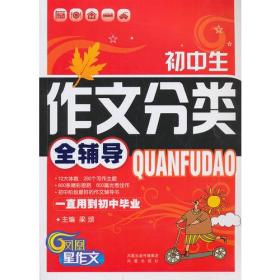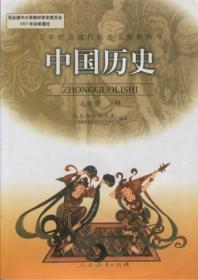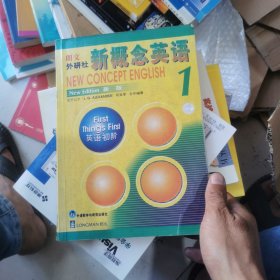
面向对象系统架构及设计(影印版)
¥ 3.97 1.0折 ¥ 40 九品
仅1件
北京大兴
认证卖家担保交易快速发货售后保障
作者[美] 著
出版社科学出版社
出版时间2003-05
版次1
装帧平装
货号10-007
上书时间2024-09-23
- 在售商品 暂无
- 平均发货时间 18小时
- 好评率 暂无
- 最新上架
商品详情
- 品相描述:九品
图书标准信息
- 作者 [美] 著
- 出版社 科学出版社
- 出版时间 2003-05
- 版次 1
- ISBN 9787030114006
- 定价 40.00元
- 装帧 平装
- 开本 其他
- 纸张 胶版纸
- 页数 363页
- 字数 451千字
- 【内容简介】
-
本书针对面向对象开发过程中的系统设计阶段,全面论述了基本概念、静态设计模式、对象一致性、对象建模中的高级问题、动态对象建模、常用接口、面向对象系统架构等重要内容。书中给出了大量的实例,并提供了网站以便读者下载。
本书适合面向对象系统分析及设计人员阅读。 - 【目录】
-
Preface
Chapter 1 Basic Concepts
1.1 The Nature of Objects
1.2 Unified Modeling Language
1.3 UML Notation Basics
1.4 Object Creation and Destruction
1.5 Associations and Links
1.6 Aggregation and Composition
1.7 Servant Classes and Delegation
1.8 Inheritance
1.9 Exercises
Chapter 2 Common Patterns in Static Design
2.1 Collection Managers
2.2 Containers
2.3 Self-Containing Classes,Hierarchies,and Networks
2.4 Relationship Loops
2.5 Binary Association Classes
2.6 The Handle-Body Pattern
2.7 Dynamic Schema
2.8 shared Object Pools
2.9 Object Model for Extensible Markup Language
2.10 Case Study:ATM System Software-Part 1
2.11 Case Study:Shared Whiteboard-Part 1
2.12 Case Study:Access Control Lists-Part 1
2.13 Exercises
Chapter 3 Persistent Objects
3.1 Transactions and Database Management Systems
3.2 Object-Oriented Database
3.3 Relational Database
3.4 Mapping Persistent Object to Tables
3.5 A Critical Comparison Between Relational and Object-Oriented Database
3.6 Case Study:ATM System Software-Part 2
3.7 Case Study:Shared Whiteboard-Part 2
3.8 Case Study:A Rental Business-Part 1
3.9 Case Study:Access Control Lists-Part 2
3.10 Exercises
Chapter 4
4.1 Abstract Classes
4.2 Multiple Inheritance
4.3 Interfaces
4.4 Inner Classes
4.5 Collections
4.6 Packages
4.7 Components
4.8 Nodes
4.9 UML Notation Basics for Dynamic Modeling
4.10 Reverse Engineering and Irreducible Patterns
4.11 Exercises
Chapter 5 Dynamic Object Modeling Basics
5.1 Use Case Analyses
5.2 Sequence Diagrams
5.3 The Client/Server Model and Distributed Objects
5.4 Interface Definition and Client/Server
5.5 The CORBA Standard
5.6 Interface Definition Language
5.7 Statechart Diagrams
5.8 Case Study:ATM System Software-Part 3
5.9 Case Study:Shared Whiteboard-Part 3
5.10 Case Study:A Rental Business-Part 2
5.11 Case Study:Access Control Lists-Part 3
5.12 Exercises
Chapter 6 Common Interface Design Patterns
6.1 Object Wrappers
6.2 Object adapters
6.3 Object Factories and Managers
6.4 Interfaces as Servant Classes
6.5 Servant Interfaces in Event Processing
6.6 Relationship Loops with Interfaces
6.7 Inheritance Ladders
6.8 CORBA Object
6.9 CORBA Client Stubs
6.10 Tactics in Designing Distributed Object*
6.11 Proxy and Surrogate Objects
6.12 Case Study:ATM System Software-Part 4
6.13 Case Study:Shared Whiteboard-Part 4
6.14 Case Study:Access Control Lists-Part 4
6.15 Exercises
Chapter 7 Object-Oriented Architecture
7.1 Notations for Architecture Diagrams
7.2 Procedural Processing Systems
7.3 Client/Server Systems
7.4 Layered Systems
7.5 Three-Tier and Multi-Tier Systems
7.6 Agents
7.7 Aggregations and Federations
7.8 Architectural Patterns in UML*
7.9 Case Study:ATM System Software-Part 5
7.10 Case Study:Shared Whiteboard-Part 5
7.11 Case Study:A Rental Business-Part 3
7.12 Case Study:The Enterprise JavaBeans Framework
7.13 Exercises
Chapter 8 Summaries and Notes
8.1 Chapter 1 Summary and Notes
8.2 Chapter 2 Summary and Notes
8.3 Chapter 3 Summary and Notes
8.4 Chapter 4 Summary and Notes
8.5 Chapter 5 Summary and Notes
8.6 Chapter 6 Summary and Notes
8.7 Chapter 7 Summary and Notes
8.8 Case Studies Summary
Chapter 9 Answers to Exercises
9.1 Chapter 1 Exercises Answers
9.2 Chapter 2 Exercises Answers
9.3 Chapter 3 Exercises Answers
9.4 Chapter 4 Exercises Answers
9.5 Chapter 5 Exercises Answers
9.6 Chapter 6 Exercises Answers
9.7 Chapter 7 Exercises Answers
Appendix A Quick References for Object Designers
Appendix B Sample Code Reference List
Appendix C Features of Object-Oriented Languages
References
Index
点击展开
点击收起
— 没有更多了 —












以下为对购买帮助不大的评价